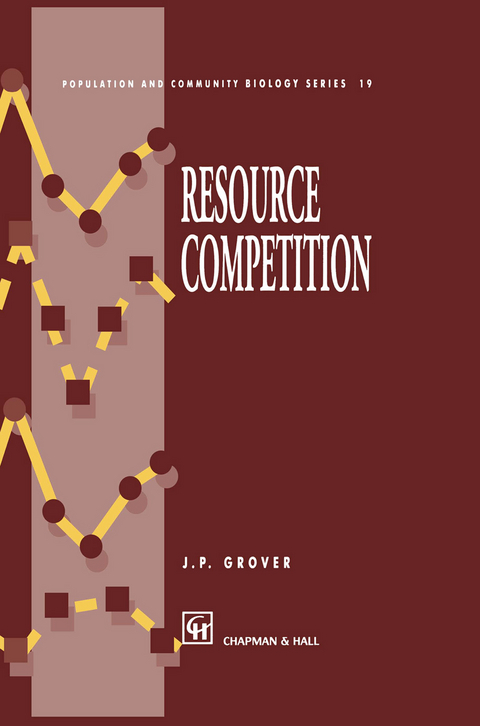
Resource Competition
Springer-Verlag New York Inc.
978-1-4613-7939-3 (ISBN)
1 Introduction.- 1.1 Resources.- 1.2 A paradigm of population growth.- 1.3 Competition and resources.- 1.4 Classical competition theory.- 1.5 Concluding remarks.- 2 Theoretical and experimental foundations.- 2.1 Introduction.- 2.2 Chemostat models.- 2.3 Competition for a single abiotic resource.- 2.4 Competition for two abiotic resources.- 2.5 Concluding remarks.- 3 Experimental studies of resource competition.- 3.1 Introduction.- 3.2 General overview.- 3.3 Microorganisms.- 3.4 Higher plants.- 3.5 Metazoa.- 3.6 Concluding remarks.- 4 Critiques.- 4.1 Introduction.- 4.2 The logical structure of theory and experimentation.- 4.3 Critiques of resource competition theory.- 4.4 A look ahead.- 5 Nonequilibrium resource competition.- 5.1 General notions.- 5.2 Experimental and theoretical studies of plankton.- 5.3 Competition for biotic resources.- 5.4 Other approaches.- 5.5 Remaining issues.- 6 Competition within food webs.- 6.1 Introduction.- 6.2 A resource-dependent food web.- 6.3 Special cases of the resource-dependent food web.- 6.4 Remaining issues.- 6.5 Conclusions.- 7 Spatial heterogeneity.- 7.1 Introduction.- 7.2 General approaches.- 7.3 Island or site-based models.- 7.4 Continuum models.- 7.5 Stepping-stone models.- 7.6 Empirical and theoretical challenges.- 7.7 Conclusions.- 8 Competition for light.- 8.1 Introduction.- 8.2 The vertical nature of light supply, consumption and photosynthesis.- 8.3 Horizontal aspects of competition for light.- 8.4 Temporal aspects of competition for light.- 8.5 Conclusions and remaining issues.- 9 Resource competition and evolution.- 9.1 Introduction.- 9.2 Purely phenotypic approaches.- 9.3 Genetic approaches.- 9.4 Conclusions and remaining issues.- 10 Applications.- 10.1 Introduction.- 10.2 Water quality management.- 10.3 Medicine.- 10.4Conservation.- 10.5 Conclusions and remaining issues.- 11 Conclusions.- 11.1 Introductory remarks.- 11.2 The current status of resource competition.- 11.3 Concluding remarks.- References.
| Reihe/Serie | Population and Community Biology Series ; 19 |
|---|---|
| Zusatzinfo | X, 342 p. |
| Verlagsort | New York, NY |
| Sprache | englisch |
| Maße | 155 x 235 mm |
| Themenwelt | Naturwissenschaften ► Biologie ► Evolution |
| Naturwissenschaften ► Biologie ► Ökologie / Naturschutz | |
| Naturwissenschaften ► Biologie ► Zoologie | |
| ISBN-10 | 1-4613-7939-3 / 1461379393 |
| ISBN-13 | 978-1-4613-7939-3 / 9781461379393 |
| Zustand | Neuware |
| Haben Sie eine Frage zum Produkt? |
aus dem Bereich


